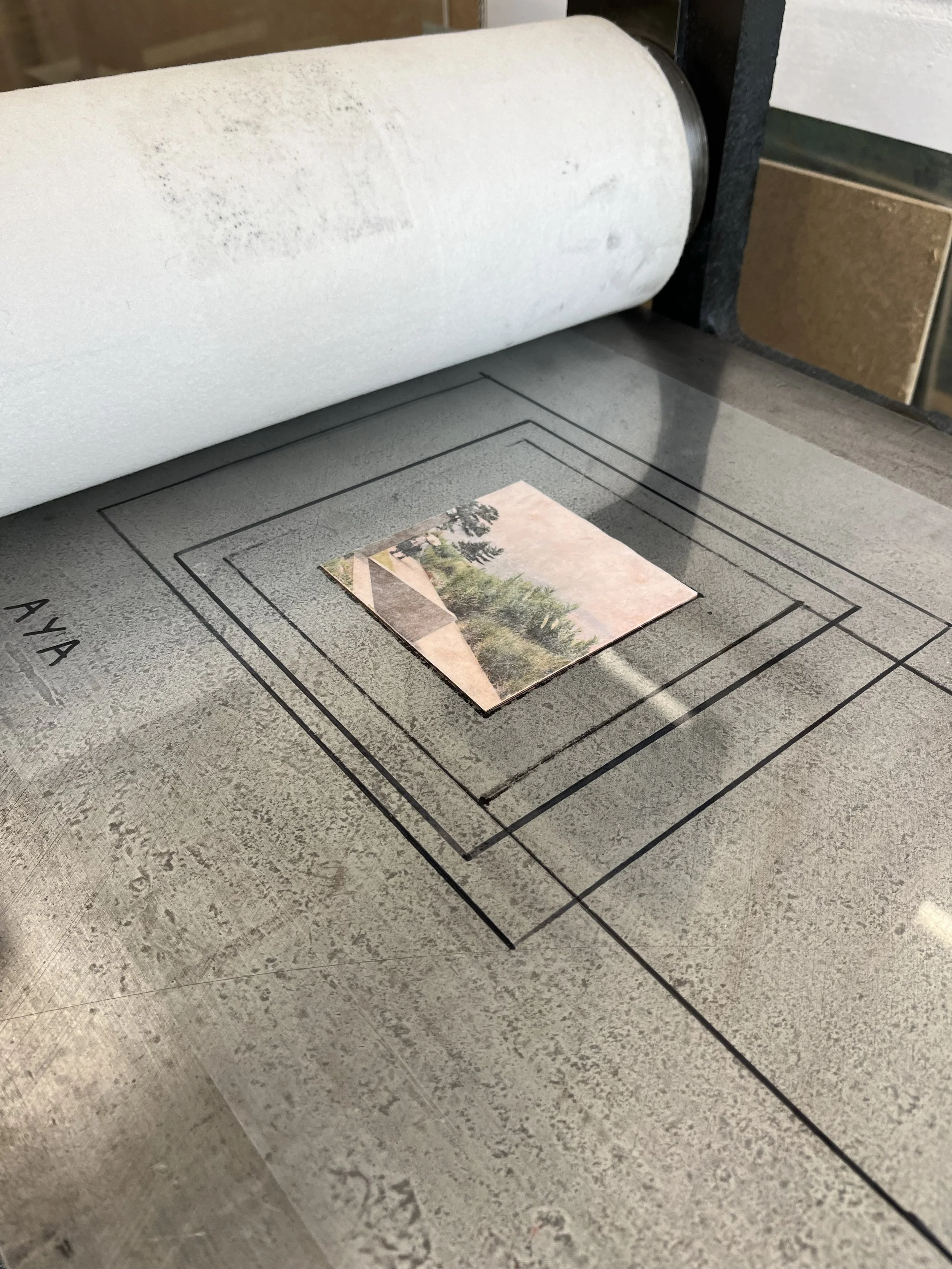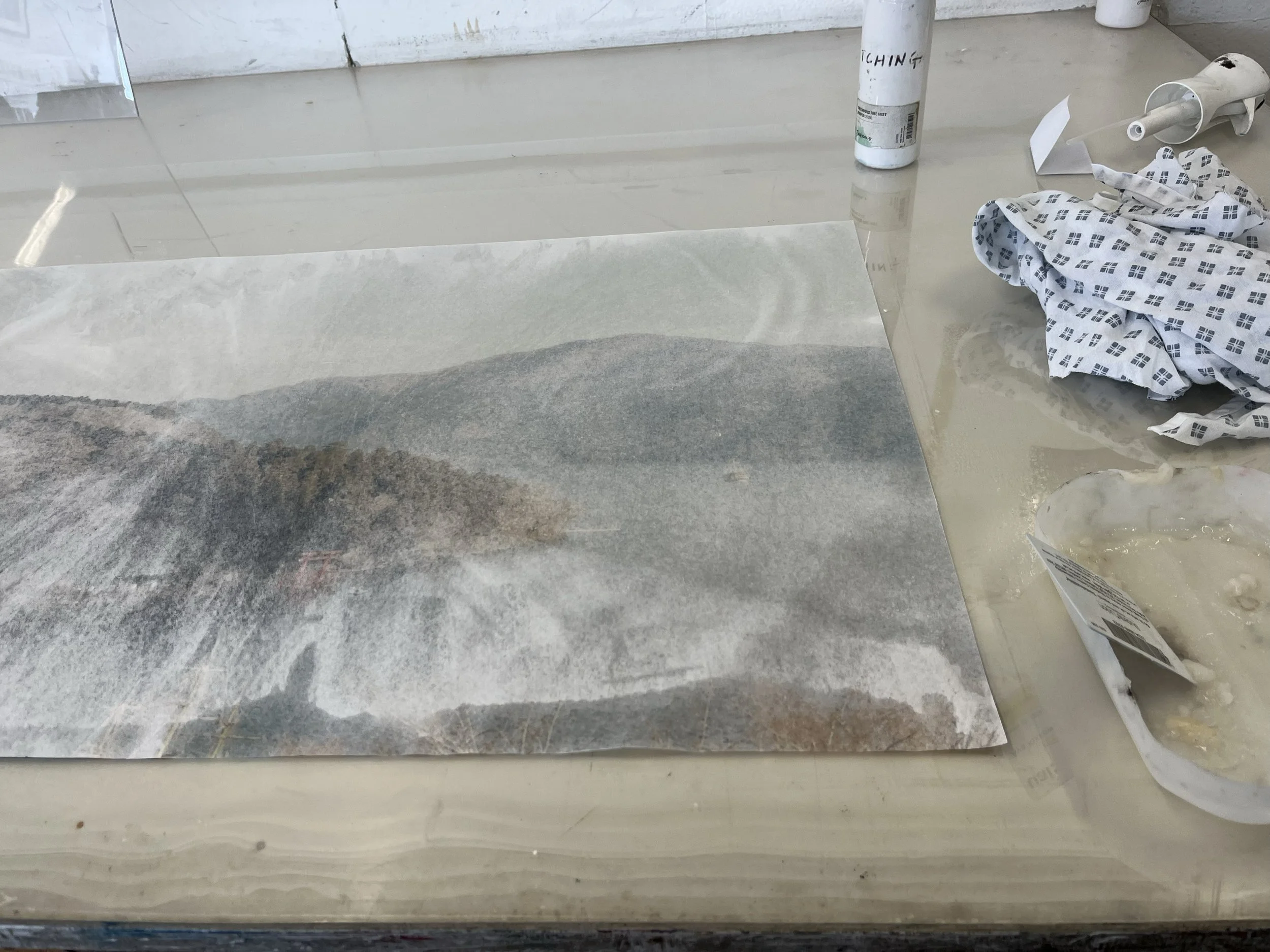Etching with Chine collé
Initially, I was trying out the layer with hard ground etching and Chine collé (with inkjet print). I started it as mini-sized print series which is 10 × 10cm for each plate. Later on, I decided to make a print in a larger size, 98 × 68cm. I preferred a line drawing rather than a sketch style or plane surface so I chose a copper plate which allowed me to draw more strong lines. The photograph was printed on Japanese Shoji paper with an inkjet printer, which paper is thin and soft yet very strong. Therefore it can be said that Shoji paper is suitable for etching with Chine collé.
Etched copper plate around 30min
Inking with 2 colours
Put on Nori paste onto paper
Print on Hahnemühle paper
Laser cut woodcut print & Mokuhanga
Laser cut Mokuhanga is a mixing mechanical and handed process. I drew the original illustration with an iPad because I needed to see the projection/ photographic layer while I was considering a design. Then I sent illustration data to the laser cutting machine. This process is quite interesting for me to see the contrast between precise lines and wood texture. I used a baren to print these wood plates - it became my first interaction with wood material by hand.
Drawing process on an iPad as comparing it with the photograph
Laser-cut woodblocks for New Arabesque Ⅱ
Printing by hand with a bamboo baren
Inking with a Hake blush, mixed water-based ink and Nori paste
Projection and Sound
Wood-cut prints were scanned and tested as a projection. I added subtle yet lively movements to images with Premiere Pro. To create an installation, I recorded the sounds in my room - the sounds were personal and it’s recorded during my meditation.









